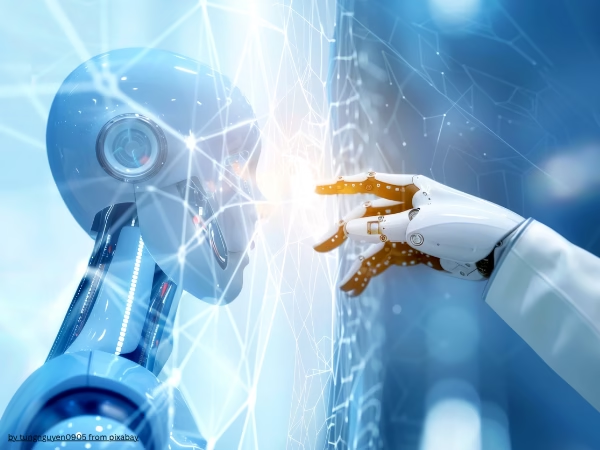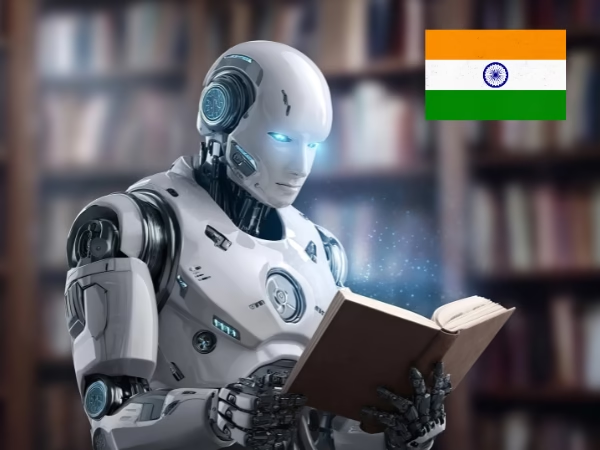The main difference between generative AI and predictive AI is that generative AI creates new content like text, images, or videos, while predictive AI analyzes past data to forecast outcomes such as market trends or equipment failures.
Have you ever wondered what is the difference between generative AI and predictive AI — and why everyone keeps talking about both?
It’s simple.
Generative AI creates something new.
Predictive AI forecasts something likely to happen.
Both sound similar because they rely on data and machine learning, but they serve different purposes — and understanding that difference helps you know which one to use for business, study, or creative work.
Quick Answer: The Core Difference
| Aspect | Generative AI | Predictive AI |
|---|---|---|
| Purpose | To create new content (text, images, music, videos). | To predict outcomes using data (future trends, maintenance, stock prices). |
| Example | ChatGPT writing a blog or Midjourney generating art. | AI forecasting next week’s stock trend or equipment failure. |
| Input Type | Learns from large unstructured datasets. | Learns from structured historical data. |
| Output Type | Creative and open-ended. | Logical and numerical. |
| Tools | ChatGPT, Gemini, DALL·E, Claude. | IBM Watson, Amazon Forecast, H2O.ai, DataRobot. |
So in short — generative AI imagines, predictive AI estimates.
Understanding Generative AI
Let’s start with what generative AI actually does.
Generative AI systems use large models (like GPT or diffusion models) to produce new data based on what they’ve learned.
If you’ve ever used ChatGPT to write a poem, Midjourney to create digital art, or RunwayML to edit videos, you’ve experienced generative AI firsthand.
Read this also Difference Between Artificial Intelligence and Human Intelligence
How It Works
Generative AI is trained on massive datasets — text, images, or sound — and learns patterns to “generate” similar but new content.
It doesn’t just copy; it predicts what comes next to create something coherent.
Example:
You ask, “Write a funny birthday message for a friend.”
The AI generates something new every time based on prior language patterns.
That’s creativity through computation.
Popular Applications of Generative AI
- Content creation: Blogs, marketing copy, social media posts.
- Image and video generation: Tools like DALL·E, Runway, and Pika Labs.
- Design and art: AI-assisted illustration and product mockups.
- Education: Personalized learning content or essay outlines.
- Coding assistance: Tools like GitHub Copilot.
Generative AI shines wherever imagination meets automation.
Understanding Predictive AI
Now, what about predictive AI?
Predictive AI focuses on identifying patterns in past data to forecast future outcomes. It powers recommendation systems, demand forecasts, and AI stock prediction models.
How It Works
Predictive AI uses algorithms like regression analysis, decision trees, or neural networks to analyze historical data.
It learns from what’s already happened — then estimates what’s likely to happen next.
Example:
An e-commerce platform uses predictive AI to suggest what product you might buy next.
A bank uses it to predict whether a loan applicant will default.
It’s like a smart fortune-teller — powered by math, not magic.
Real-World Use Cases
- AI stock prediction: Analyzing historical stock prices to forecast short-term trends.
- Predictive maintenance AI: Detecting when machines or vehicles might fail before they actually do.
- Healthcare: Predicting disease risks using medical records.
- Retail: Forecasting demand or pricing strategies.
- Weather prediction: Using data models to forecast temperature and rainfall patterns.
Predictive AI is about foresight — helping organizations act before problems occur.
Analogy: Generative vs Predictive AI Is Like Artists vs Analysts
Imagine two friends:
Riya the Artist (Generative AI)
She paints, writes songs, and creates new worlds from imagination.
Amit the Analyst (Predictive AI)
He studies charts, looks at past data, and tells you what might happen next week.
Both are intelligent — but their goals are different.
Riya creates. Amit calculates.
That’s the perfect way to remember the difference between generative AI and predictive AI.
AI in the Real World: When They Work Together
The exciting part? Generative and predictive AI often combine in practical applications.
Example 1: AI for Stock Prediction
- Predictive AI analyzes years of market data and predicts how a stock might move.
- Generative AI can then create text summaries or visual reports explaining those predictions in human language.
So, the stock prediction AI you see on trading platforms often includes both elements.
Example 2: Predictive Maintenance AI
- Predictive maintenance AI forecasts when a machine might fail.
- Generative AI can auto-generate maintenance reports or training guides based on that data.
Together, they make operations smarter and more proactive.
Example 3: Marketing and E-Commerce
- Predictive AI estimates which customers are most likely to buy.
- Generative AI then writes customized emails or ad copy for them.
That’s why companies are investing in both — logic and creativity.
Future Prediction AI: The Path Ahead
Looking at AI future predictions, experts believe both types of AI will continue to evolve but in complementary ways:
- Generative AI will dominate content, communication, and design.
- Predictive AI will lead industries that depend on precision — finance, logistics, healthcare, and manufacturing.
A 2025 Gartner report predicts over 60% of enterprises will combine both types to create “adaptive intelligence” — systems that not only predict the future but also create new strategies to handle it.
Fun Fact Corner
- ChatGPT is generative, but its responses rely partly on predictive modeling of language.
- Netflix uses predictive AI for recommendations and generative AI for artwork personalization.
- In aviation, predictive maintenance AI saves airlines millions by detecting part failures early.
- Future “AI companions” might blend both — predicting your mood and generating content to match it.
How Businesses Use Each Type
| Use Case | Generative AI Example | Predictive AI Example |
|---|---|---|
| Finance | Generate personalized investment advice reports. | AI for stock prediction and risk modeling. |
| Manufacturing | Auto-create machine logs or manuals. | Predictive maintenance AI to avoid downtime. |
| Healthcare | Generate patient summaries or medical imaging. | Predict disease outbreaks or treatment outcomes. |
| Marketing | Create ad visuals or email copy. | Predict customer behavior and conversion rates. |
Both are shaping industries, but they operate in different layers of intelligence — creative vs analytical.
Challenges and Limitations
Even with all this progress, both forms of AI have limitations.
Generative AI Limitations
- Can hallucinate or generate inaccurate content.
- May reproduce bias from training data.
- Needs human review before publication.
Predictive AI Limitations
- Accuracy depends on quality and completeness of past data.
- May struggle with sudden, unseen events (like pandemics or black-swan market changes).
- Often requires constant retraining.
That’s why experts recommend using AI as an assistant, not an oracle.
A Human Touch: What This Means for You
Whether you’re a student, professional, or business owner, the lesson is simple:
Understand both kinds of intelligence — use generative AI for creativity and predictive AI for clarity.
For example:
- Writers use ChatGPT to brainstorm ideas (generative).
- Investors use AI for stock prediction to make informed decisions (predictive).
- Engineers rely on AI predictive maintenance to prevent costly breakdowns.
Knowing when to apply which type is your real competitive advantage.
Summary Table: Difference Between Generative AI and Predictive AI
| Feature | Generative AI | Predictive AI |
|---|---|---|
| Goal | Generate new data or content. | Forecast outcomes or probabilities. |
| Input | Unstructured large datasets. | Historical and structured data. |
| Output | Text, images, videos, music. | Numbers, graphs, or probability results. |
| Example Tools | ChatGPT, DALL·E, Midjourney. | H2O.ai, IBM Watson, Amazon Forecast. |
| Primary Use | Content creation and automation. | Forecasting, analytics, and maintenance. |
Conclusion: The Harmony of Creation and Prediction
If you think about it, both generative and predictive AI mirror how humans work.
We imagine possibilities (generative thinking) and plan actions (predictive reasoning).
So when someone asks, “What is the difference between generative AI and predictive AI?”, you can confidently answer:
“Generative AI creates. Predictive AI anticipates. Together, they represent the full circle of human-like intelligence — creativity and logic.”
As AI continues to grow, these two branches will keep shaping our future — from creative storytelling to future prediction AI that powers industries.
FAQs
1. What is the main difference between generative AI and predictive AI?
Generative AI creates new content like text, art, or video, while predictive AI forecasts outcomes using existing data.
2. Which is used in AI stock prediction?
Predictive AI powers AI for stock prediction, analyzing historical stock prices and market patterns to forecast trends.
3. What is predictive maintenance AI?
It’s a form of predictive AI used in industries to detect when machines might fail, helping prevent costly downtime.








